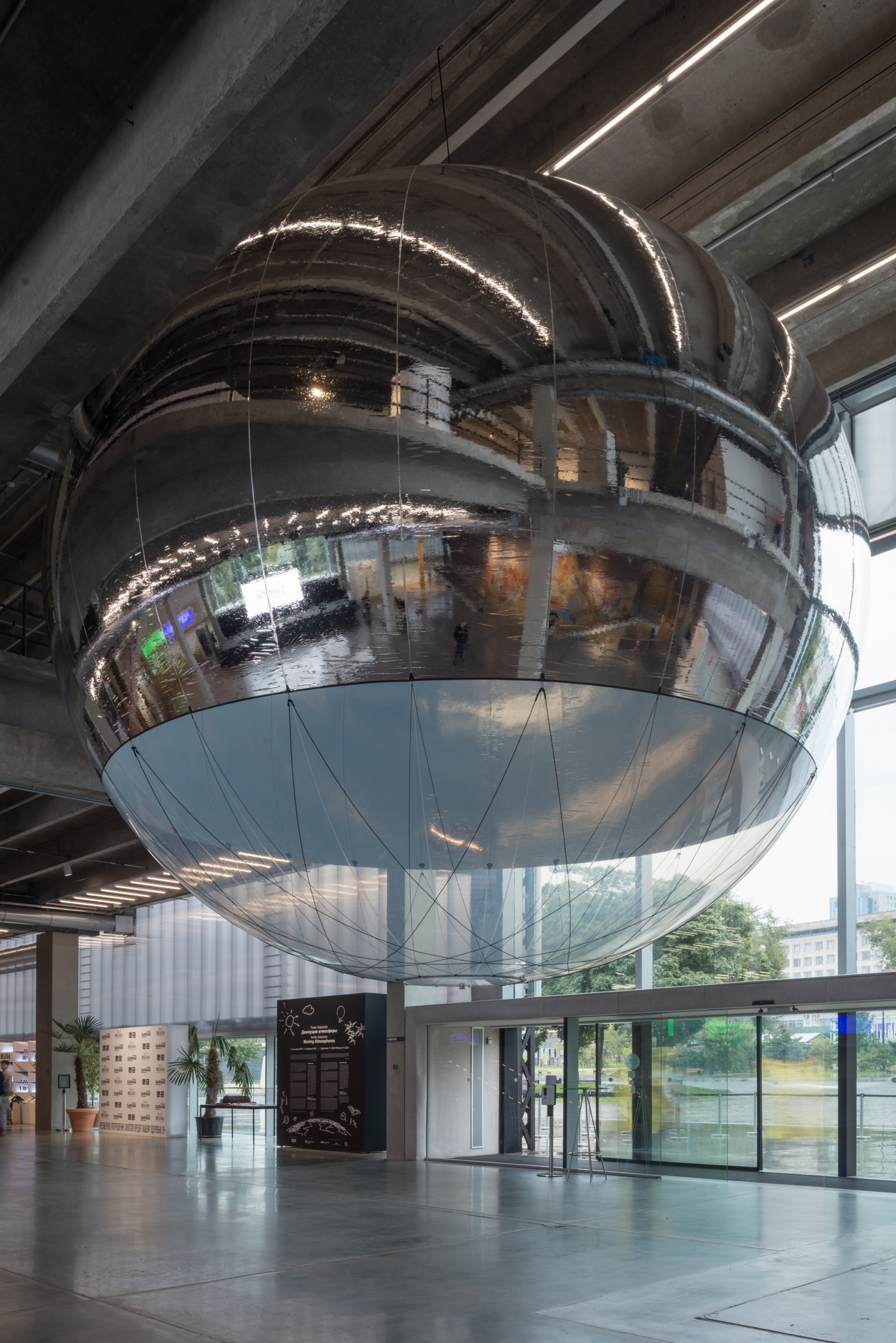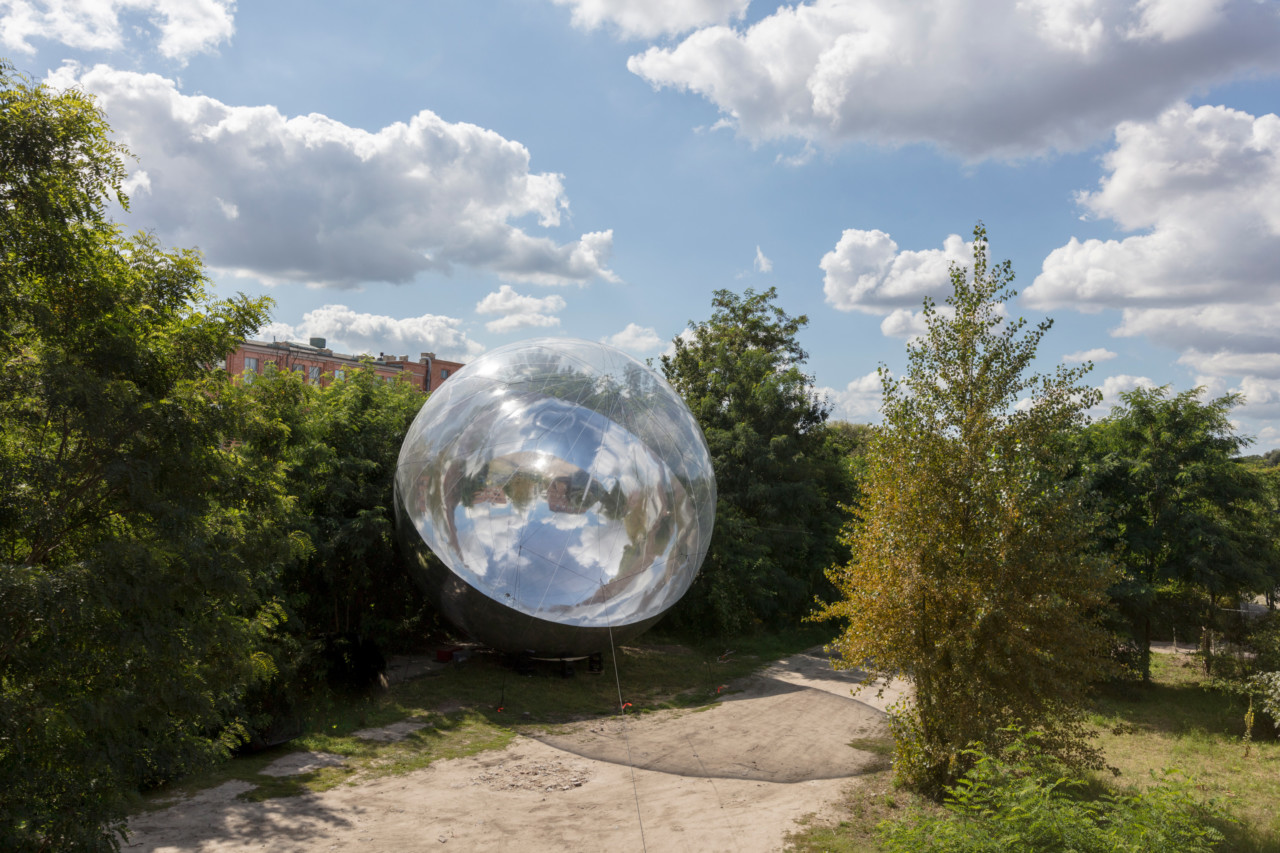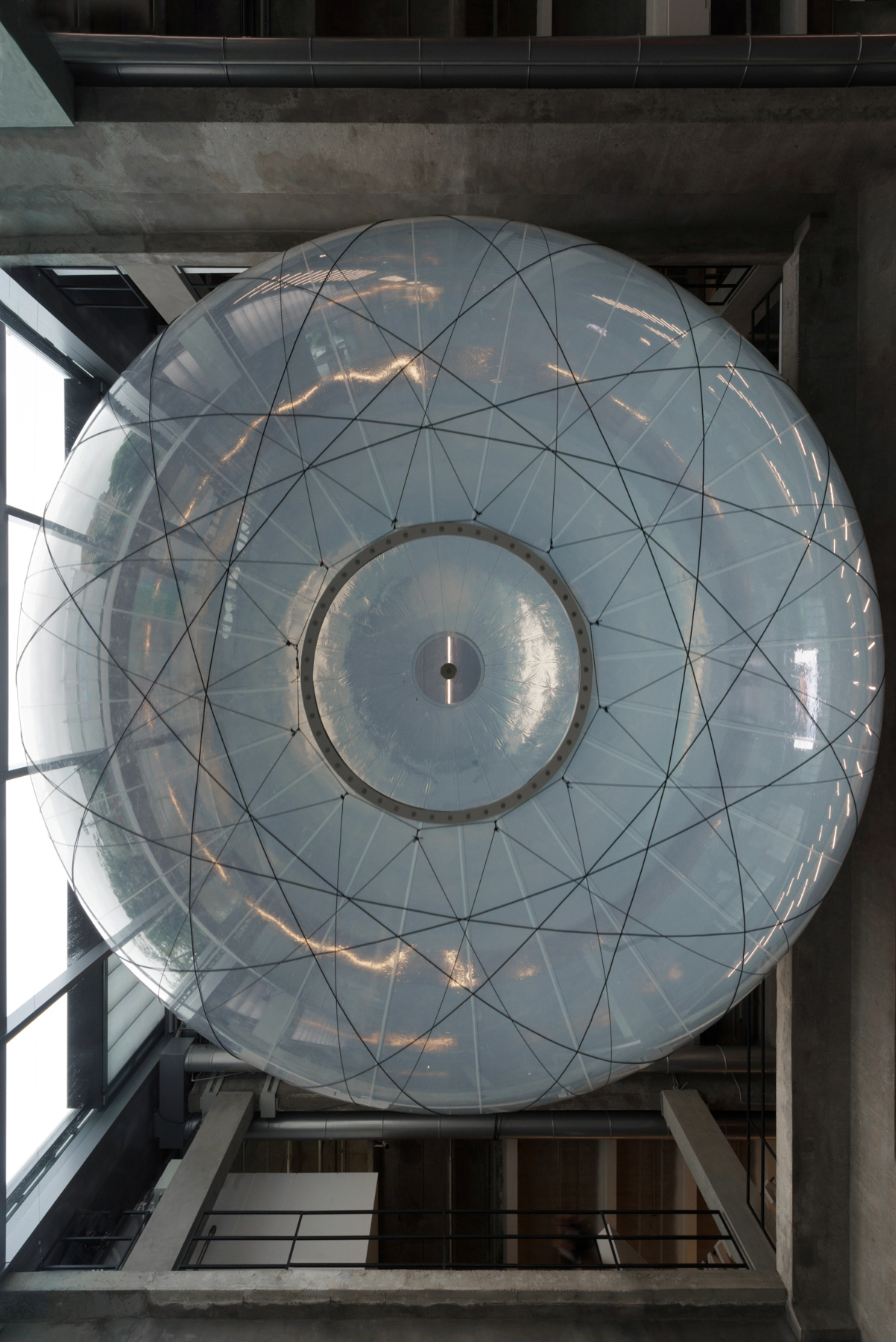Can our current materials be recontextualized to provide solutions in the face of rapidly magnifying climate change? For Argentinian artist Tomás Saraceno, whose inflatable Moving Atmospheres now resides in the atrium at the Garage Museum of Contemporary Art in Moscow, that answer is a definitive yes.
Moving Atmospheres marks the 10th Garage Atrium Commission, which began in 2015 as a way of showcasing larger-scale work. Saraceno’s sculptural, three-quartered-mirrored ball, topped by a translucent ethylene tetrafluoroethylene (ETFE) dome, resembles something akin to one of Anish Kapoor’s smaller works at first glance, but is much more than a dangling disco ball.
Rather, Saraceno has envisioned Moving Atmospheres as the next step in the research conducted by the Centre National d’Études Spatiales (CNES, the French space agency) into balloon travel passively powered by infrared radiation in the upper atmosphere. Instead of burning fossil fuels, the two-toned balloon absorbs heat through the clear dome up top, allowing the air inside to expand and rise, while the mirrored portions reflect sunlight to ensure the balloon won’t overheat and explode.

Moving Atmospheres is the largest of Saraceno’s prototypical flying machines, and is intended to travel long distances at an altitude of 12-to-25 miles high. If such models prove successful, Saraceno hopes, humanity could enter what he’s dubbed the “Aerocene”; a new age of emissions-free air travel through self-regulating machines.
In Saraceno’s Aerocene Manifesto, made available on the Garage Museum’s website to accompany the exhibition, he explains that engaging with the atmosphere on a tangible level, with the air itself, would go a long way towards conservation efforts. He writes:
“Aerocene is a proposal—a scene in, on, for, and with the air—toward a reciprocal alliance with the elements capable of restoring the air to a commonwealth of life.
Aerocene imagines space as a commons, a physical and imaginative place subtracted from corporate control and government surveillance.
Aerocene promotes de-securitized, free access to the atmosphere, through new tools and relational practices emerging from communities attempting to move the Earth’s masses toward a post-fossil-fuel era.”
If you’re in Moscow and want to examine Moving Atmosphere up close, the installation will remain on display through February 14, 2021.


















